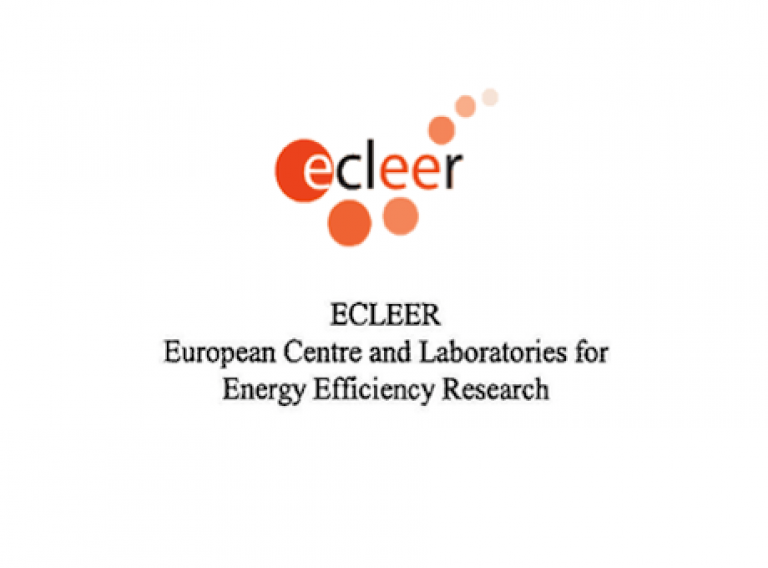Members of UCL-Energy attend and present at ECLEER 5th PhD students seminar
4 October 2012
Last week (27-28 September 2012), the European Centre and Laboratories for Energy Efficiency Research (ECLEER) held its 5th PhD students seminar, at the EDF R&D campus at Les Renardieres, France.

Andrew Smith, Senior Research Associate at UCL-Energy, has written the following account of the seminar.
From UCL-Energy, PhD students David Veitch, Joel Guillbaud, Mike Fell, Sam Stamp, Stephanie Gauthier, and UCL-Energy Research Associate Gesche Huebner and I attended. Altogether, there were probably around 70-80 people there. We had presentations on a very wide range of subjects, and the revised ECLEER website should be up shortly, with copies of the presentations.
C-K Theory
Pascal Le Masson of Mines ParisTech opened proceedings with a presentation on C-K (Creativity-Knowledge) Design Theory, which gives a framework to bridge the gap between research and innovation. He set out a manifesto for design theory, which involved breaking the identity of objects, the building of new disciplines, and the emergence of a new kind of knowledge, mediating the links between designer, supplier, and end-user. Pascal then gave us 30 minutes of specific examples; detailed engineering; nuts and bolts of real products, and how C-K theory had brought them to market, and/or gave insights into how and why they came to be. He’s a great speaker, with a valuable story to tell about how innovation comes about, and I’ll be hoping we can get him in for a seminar here at some point soon.
3d fly-around
The long-time friend of UCL Energy Institute, Pascal Terrien, is now Director of EDF R&D's Sustainable International Cities Programme, and on the Thursday evening, just before a fine many-course meal in a grand 16th or 17th Century chateau, he gave a very entertaining presentation of the complex systems modelling (COSMO) he's been doing on sustainable cities. The modelling integrates land-use, transport, water, energy supply & demand, and waste handling. The main model outputs are presented in a 3-D fly-through of the city. Mexico and Singapore are two of the cities first modelled.
Noisy heat pumps
Ola Gustafsson and Henrik Johansson (SP Sweden / EDF R&D) talked us through some of the noise issues and mitigation possibilities with air-source heat pumps: some models on the market get up to a rowdy 70 decibels during their defrost cycle, and many get to a peace-ruining 60 decibels frequently.
They've also produced a Christmas CD featuring their favourite clips of the sounds of different heat pumps in main use, starting up, turning off, 4-way valves operating, and switching through the defrost cycle.
The vegetable-to-water heat-exchanger
We saw various heat pumps and heat exchangers being tested, including those providing medium-grade heat to industry (250-1000kW, 120 degrees Celsisus). We saw heat exchangers for air-air, air-water, and vegetable-water.
No, really, a vegetable-water heat-exchanger. For heat recovery in the food-processing sector. This led me to one of those little, seemingly banal insights, that turns out to have deeper implications for how I look at processes. Let me explain. There were several PhD students looking at heat-management and heat-reuse in industry, and one recurring theme, was that although many of these processes involved heat at various temperatures from 40 to 1600 degrees Celsius, all of their material inputs arrived at the factory at ambient temperature; and they all left the factory at ambient temperature. And in between, was a lot of heating, and a lot of cooling. And lots of opportunities for saving huge amounts of money, just waiting for the right bit of analysis to pinpoint what needed to be done and where. We saw at least two good demonstrations of this:
One PhD leads to big energy savings
1) Boutros Ghannam of Mines Paristech-CEP showed us the development of his real-time heat modelling in steel slabs, which models the detailed temperature distribution within steel slabs as they go through the furnaces, providing feedback to the control systems, allowing them to increase the quality of their product, and cut their energy inputs. project paid for itself within the first year, and the steel company were very impressed with the results. This was made possible by some very talented programming by Boutros, and by the new Tesla GPU cards, which feature a thousand parallel processing cores.
The appliance of science
2) Pinch analysis of industrial heat flows (Matthias Bendig, EPFL LENI - FP7 LOVE) gives a robust, reproducible methodology for identifying the best places for heat exchange, heat pumps, and exergy-recovery using organic rankine cycle engines (Samer Maalouf, Mines ParisTech-CEP), within complex processes. This replaces existing systems where, I was told, someone wanders around the factory with a thermocouple & meter taking temperatures at random points, and has a think about where heat can be moved. Read more about Matthias’ Pinch Analysis work at http://www.aidic.it/cet/12/29/018.pdf
UCL makes a splash
UCL presentations by Stephanie, David and Sam on their respective studies into energy in the built environment were well-received, and the ECLEER director, Laurent Levacher made a special point of thanking them for their contributions, as did our project partners Sylvie Douzou (EDF R&D - ECLEER) and Marie-Helen Laurent (EDF R&D EnergBAT).
 Close
Close

